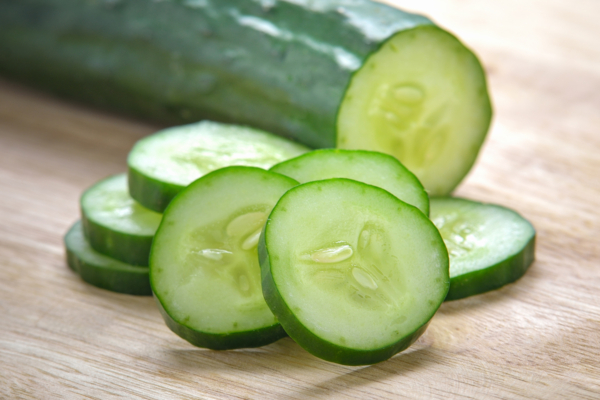Cucumbers, also known as “small cucumbers” in Taiwan, are one of the main vegetables in summer. They have various benefits such as reducing blood pressure and boosting immunity, making them a refreshing choice for salads that never get boring. In addition to consumption, cucumbers have other clever uses, such as protecting plants. Placing cucumbers in your garden can help prevent pests like slugs and snails from damaging plants, as these pests feed on plants and can cause extensive harm.
According to the UK magazine “Homes & Gardens,” there are many methods to control the damage slugs and snails cause to plants, with using cucumbers being one of the simplest and most effective methods. While cucumbers may not eliminate these pests entirely, they can assist in controlling their numbers.
To utilize cucumbers in deterring pests, start by taking a cucumber from the refrigerator and slicing it thinly. Do not worry about the quality of the cucumber; in fact, it is best to use cucumbers that are past their prime for consumption.
Next, in the evening, place the cucumber slices near plants that are susceptible to slug and snail infestations. This method works similarly to trapping pests since slugs and snails are attracted to the cucumber’s scent and moisture, acting as bait.
A few hours later or the next morning, you can check the cucumber slices, collect the slugs or snails, and either relocate them far from the garden or dispose of them as you see fit. This method does not require chemical pesticides, is safe for pets, and requires minimal effort.
If you prefer not to kill the captured slugs and snails directly, move them at least 50 feet away from your garden, a distance sufficient to deter their homing instincts. Another method is to place them near bird feeders as food for birds.
Combining the cucumber defense method with other pest control methods can yield better results. For instance, you can raise ducks in the garden that feed on these pests or encourage natural predators like frogs to inhabit the area to control pest populations.
Frogs, as amphibians, primarily feed on insects and play a crucial role in the garden ecosystem. A single frog can consume over 10,000 insects annually, including slugs, snails, mosquitoes, and caterpillars, making them an effective pest control method.
To attract frogs to your garden, you should have a small pond with varied depths, with the deepest part around 2 feet. Different depths accommodate frogs at different stages of their lifecycle.
Additionally, plant dense vegetation around the pond, such as evergreen shrubs and leafy ground cover plants, to provide frogs with moist, cool hiding spots during the day. Avoid using chemical insecticides in the garden.
It is worth noting that attracting frogs to your garden may take some time as they need to familiarize themselves with the habitat and feel comfortable, so patience is key.
Apart from using cucumbers as mentioned above, you can also use milk, beer, or orange peels as bait for slugs or snails to capture them (for more details, click here).

